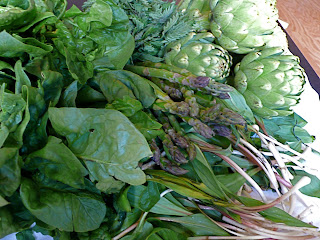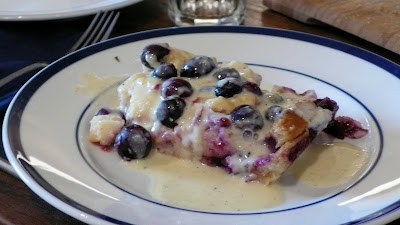
HUZZAH! 'Tis I, back from Juicecleanseland, finally revived and able to apply fingers to keyboard and report my findings.
If you've ever competed on the pageant circuit, or been trapped in a mineshaft, you might have some insight into what the past three days have been like for me. Here's a brief overview.
Day one was challenging, but the real low point was day two. I woke up feeling like I had anvils tied to my limbs. The Scribe and I stood across from each other in the half-dark kitchen, drinking our lukewarm-water-and-lemon "morning tonics" and glaring at each other with a mix of blame, fear, and resignation. By halfway through Core Fusion Cardio, I started having an out of body experience as my mind wandered to my happy place, which happens to be the bottom of a wine glass. I can't prove anything, but I know that I saw the clock tick backwards for a period of minutes, and I'll swear that the instructor started shouting orders in German.
Work was a comedy. All non-essential thought and movement were removed from my routine. Unable to focus on anything substantive, I took to obsessively reading the BluePrintCleanse website for guidance and reassurance about exactly what this would do for me and when I could expect things to get better. The site told me that the cleanse would actually improve my concentration and energy. LIES!! What other lies did the BluePrintCleanse have in store for me?? Was it really even romaine/parsley/kale/celery juice I was drinking, or was it perhaps the pureed souls of failed juice cleansers?
The worst part of each day, and especially day two, was 4 PM - 9 PM. Nightfall. This was when the rage came out, the bargaining, the panic. This was the point at which I was exhausted by cravings for foods I couldn't have, and embittered by the contrast between my usual dinner and the green juice that I'd be downing for the THIRD time since sunrise.
My energy did pick up on day three, along with my concentration and my will to live, which was probably due in equal parts to my body adjusting to the new regimen and my mind knowing it would all soon be over. By yesterday afternoon, I had resigned myself to the steady ticker of verboten foods marching through my head, and no longer had enough fight left in me to care.
Today I feel energetic. More so than pre-cleanse? Hard to tell. I think I'm firmer in the abs and I definitely have the smug, virtuous glow enjoyed only by people with self-imposed dietary restrictions.
But the biggest benefit to the cleanse was [cue Chariots of Fire theme] what I learned about myself. It's astonishing how much of my day-to-day joy is derived from food and drink: preparing it, consuming it, sharing it with friends. It is my entertainment, my creativity, and my comfort. Replacing food with vegan juice drinks made me a shadow of my former self.
The payoff: I was reminded of the delicate balance between hunger and satiety, and how much more often we tip too far in the direction of over-fullness. It's okay to be hungry sometimes. In fact, it's great. This morning, for the first time in months, I bounced out of bed and made a real breakfast (the BPC website told us we could "begin to introduce fruit" the first day after the cleanse but we at no point seriously considered that advice). The Scribe and I sat at our breakfast table with the sun streaming in on us, slowly and quietly devouring pastel omelets with tomato and carmelized onion, half a whole-wheat bagel, pineapple, and coffee. I was shocked at how little it took for me to become full, and how satisfied I felt. And what could be better than that?
Ok, it's time to close this sad chapter on cleansing. Let's move on to happier things. I'm off to pour myself a glass of wine and enjoy the bowl of Kuku Wa Nazi pictured above...because I can.
















